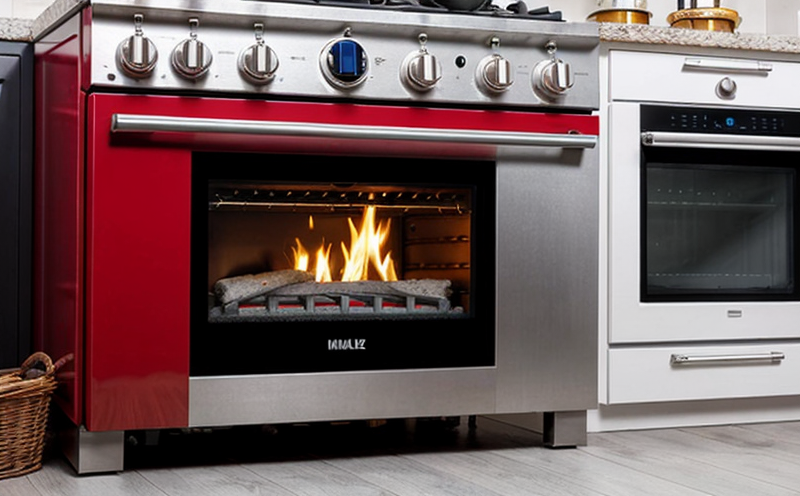UL 858 Fire Safety Testing of Household Electric Ranges
The UL 858 standard is one of the most stringent and respected fire safety standards for household electric ranges. This service ensures that appliances are designed, manufactured, and tested to withstand potential ignition sources without causing a fire hazard. The test simulates real-world conditions under which an appliance might be exposed to heat or flame. Compliance with UL 858 is crucial for manufacturers aiming to meet regulatory requirements and ensure product safety.
The testing process involves placing the electric range in various scenarios that replicate potential ignition points. This includes placing a small flame near the burners, simulating accidental spills of flammable liquids, and exposing the appliance to high-temperature environments. The goal is to observe whether any flames spread beyond the intended cooking area.
Manufacturers who comply with UL 858 standards can ensure that their products meet rigorous safety requirements, protecting users from potential fire hazards in the home. This service is particularly important for companies operating in sectors such as consumer electronics and household appliances, where product safety is paramount.
The test results are detailed and comprehensive, providing manufacturers with insights into areas of improvement and ensuring that all safety criteria are met. The UL 858 standard not only focuses on fire safety but also ensures that the appliance does not contribute to any further spread of a fire should one occur.
For quality managers and compliance officers, this service offers peace of mind knowing they can meet stringent regulatory requirements. R&D engineers can use the results of these tests to refine product designs and improve overall safety features. Procurement teams will find reassurance that their suppliers are meeting high standards in terms of fire safety.
The UL 858 standard is widely recognized, ensuring that products comply with international norms for household electric ranges. Compliance with this standard can be a key differentiator in the competitive market, demonstrating a commitment to user safety and satisfaction.
Industry Applications
| Application | Description |
|---|---|
| Consumer Electronics | This service ensures that appliances are safe and reliable, protecting users from fire hazards. |
| Household Appliances | The UL 858 standard is crucial for ensuring the safety of household electric ranges. |
| Safety Compliance | This service helps manufacturers meet regulatory requirements and ensure product safety. |
The UL 858 fire safety testing service is essential in various industries, particularly those focused on consumer electronics and household appliances. By adhering to this standard, companies can ensure that their products are safe for use in the home environment, thereby enhancing user satisfaction and trust.
Why Choose This Test
- Rigorous testing conditions replicate real-world scenarios.
- Comprehensive results provide manufacturers with insights into product safety.
- Ensures compliance with international standards, enhancing market reputation.
- Reduces the risk of recalls and legal disputes by identifying potential hazards early.
The UL 858 fire safety testing service offers several advantages for manufacturers. The rigorous testing conditions ensure that the appliances are exposed to scenarios similar to those they might encounter in actual use, providing a more accurate assessment of their performance. Comprehensive results allow manufacturers to identify areas for improvement and make necessary adjustments.
Environmental and Sustainability Contributions
- Avoids product recalls and associated environmental impacts.
- Promotes safer disposal practices, reducing the risk of improper waste handling.
- Encourages the design of products that are inherently safe, minimizing the need for additional safety measures post-production.
The UL 858 fire safety testing service also contributes to environmental sustainability. By avoiding product recalls and associated environmental impacts, manufacturers can reduce the overall carbon footprint of their operations. Proper disposal practices are encouraged, reducing the risk of improper waste handling and subsequent environmental damage.





